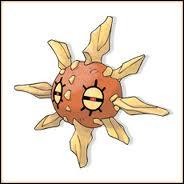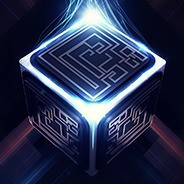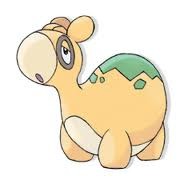Спереводом небольшого текста! сложноват и не могу увязать railroads have experimented with other types of motive power. in the 1950s gas-turbine instead of diesel propulsion was tried for a few locomotives in the united states and britain, but the results did not justify continuing development. there was a longer but very limited career in rail use for the compact and lightweight gas turbines developed for helicopters that became available in the 1960s. their power-to-weight ratio, superior to that of contemporary diesel engines, made them preferable for lightweight, high-speed train-sets. they were applied to canadian-built train-sets placed in service in 1968 between montreal and toronto and in 1969 between new york city and boston, but these were short-lived because so much other unproved innovation in their design and equipment gave trouble. most of a series of self-contained turbine-powered intercity train-sets acquired by french national railways—and of copies operated by egyptian railways and by amtrak in the united states—were still running in 1990. some german diesel-hydraulic locomotives were fitted with a gas turbine to give them added short-period power, but the turbines were abandoned in 1981. by then the appeal of the turbine had evaporated through the sharp rise in price of its cruder category of oil fuel. several attempts were made to adapt the steam turbine to railroad traction. one of the first such experiments was a swedish locomotive built in 1921. other prototypes followed in europe and the united states. they all functioned, but they made their appearance too late to compete against the diesel and electrification.
116
226
Ответы на вопрос:
Железные дороги производили с разными двигательной силы.в 1950х годах газовую турбину заменили на дизельный двигатель,который испытывали на нескольких локомативах в сша и британии, но результаты не оправдали ожиданий.существовали дольше,но имели не такой большой успех в железнодорожной области компактные и облегченные газовые турбины,разработанные для вертолётов,которые стали достуаны в 1960х годах.их удельная мощность лучше,чем у современных дизельных двигателей,делали их предпочтительно для лёгких,высокоскоростных составов.они были применены в canadian-built(я склоняюсь к тому,что это название,но не знаю точно) составах,сданные в эксплуатацию в 1968 между нью-йорком и бостоном,но они было недолговечны,потому что слишком много неисправностей в их дизайне и конструкции вызывало проблемы.большинство из серии газотурбинных междугородних составов,приобретённые french national railways-,и копии,эксплуатируемые egyptian railways и amtrak в сша всё ещё работали в 1990 году. некоторые дизель-гидравлические локомотивы были оснащены газовой турбиной, что дало им короткий период власти на этом рынке(про рынок в тексте нет,но можно добавить), но турбины были заброшены в 1981 году.к тому же, турбины перестали быть популярны из-за резкого подъема цен на нефтяное топливо.было предпринято несколько попыток адаптировать паровую турбину для железнодорожной тяги.одним из первых таких экспериментов был шведский локомотив, построенный в 1921 году. другие прототипы последовали в европе и соединенных штатах.все они функционировали,но они появились слишком поздно,чтобы конкурировать с дизелем и электрофикацией.
Is this a photo of my mum?
Is she a pretty woman?
Has she got blue eyes and a nice smile?
Is she kind and hard-working?
Does she love cooking and knitting?
Does she also love gardening?
Have we got a lot of flowers both in our flat and in our country house?
Does my mum understand me?
Do we always talk about my school life and friends?
Do I often ask my mum for advice?
Популярно: Английский язык
-
Ugly- это качество, мнение, цвет, страна, фирма?...
 tatianaishenko131.08.2022 22:04
tatianaishenko131.08.2022 22:04 -
Do you like ? yes, l do. i usually eat / drink for ./ no, l dont. l never...
 kiraflower09.04.2023 14:31
kiraflower09.04.2023 14:31 -
Ответить на вопросы. who started to collect books at your home? how many books...
 RitaTrott05.03.2020 00:26
RitaTrott05.03.2020 00:26 -
Написать рассказ блины как символ россии 7-8 предложений. : ) заранее: )...
 viktoria19029027.12.2022 14:55
viktoria19029027.12.2022 14:55 -
Надо написать статью не менее 10 предложений про любой праздник. заранее !...
 lena80860815.01.2022 03:43
lena80860815.01.2022 03:43 -
:put the verbs in brackets into the correct passive tense. 1 a: excuse me,i...
 арвгшвш25.08.2021 02:21
арвгшвш25.08.2021 02:21 -
Эссе на тему богатство не проносит счастья должно состоять из 4 абзацев, в...
 назик3109.11.2020 19:16
назик3109.11.2020 19:16 -
Choose the correct item...
 Nastya0692301.03.2022 14:09
Nastya0692301.03.2022 14:09 -
+ Chố. Kiacchard pašona Unger op mamuha mo npigaan...
 DFSAFSA26.01.2023 03:20
DFSAFSA26.01.2023 03:20 -
Put the verbs into the present simple or the present continuous...
 Dartvaider30119708.11.2020 00:28
Dartvaider30119708.11.2020 00:28
